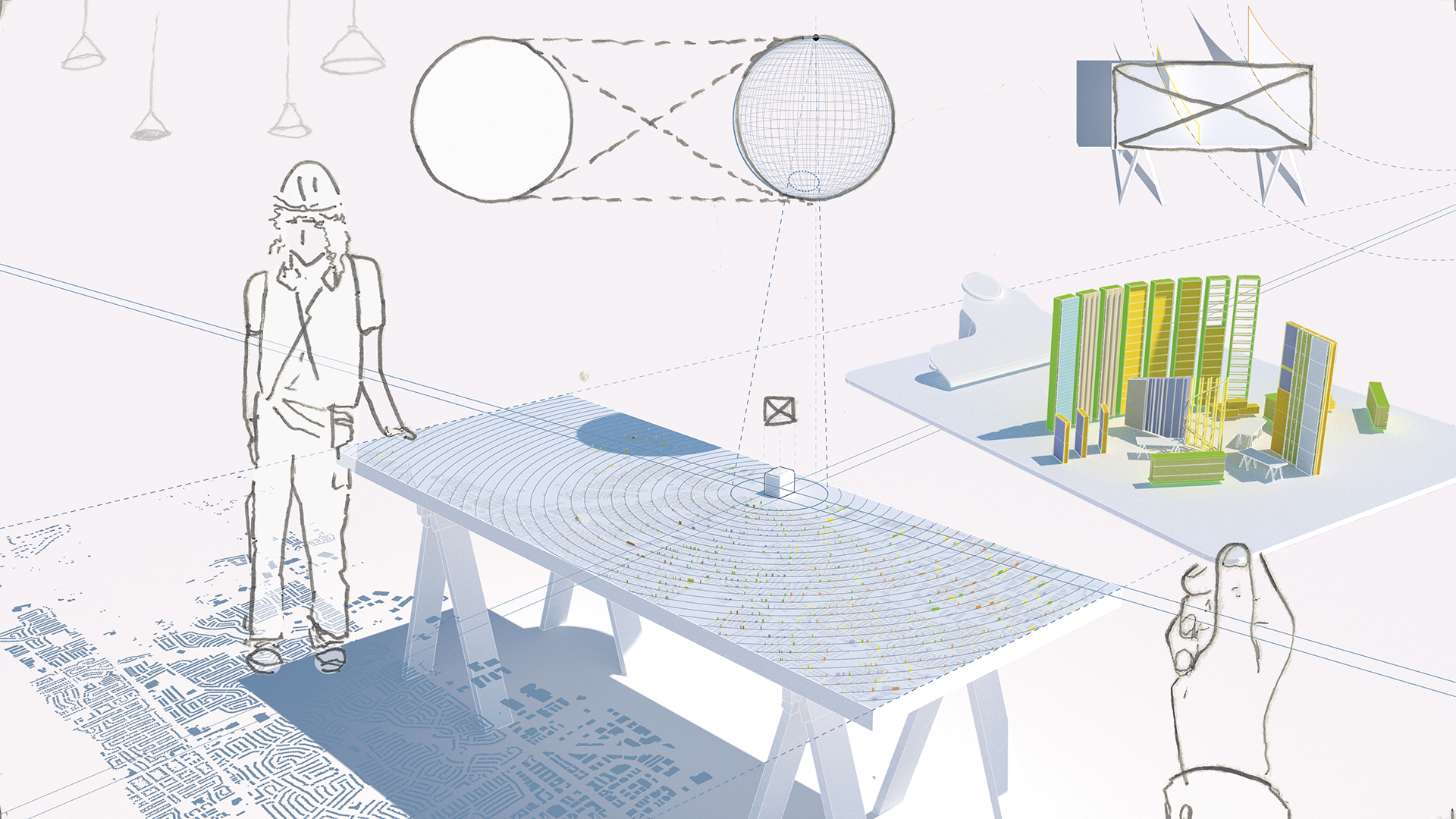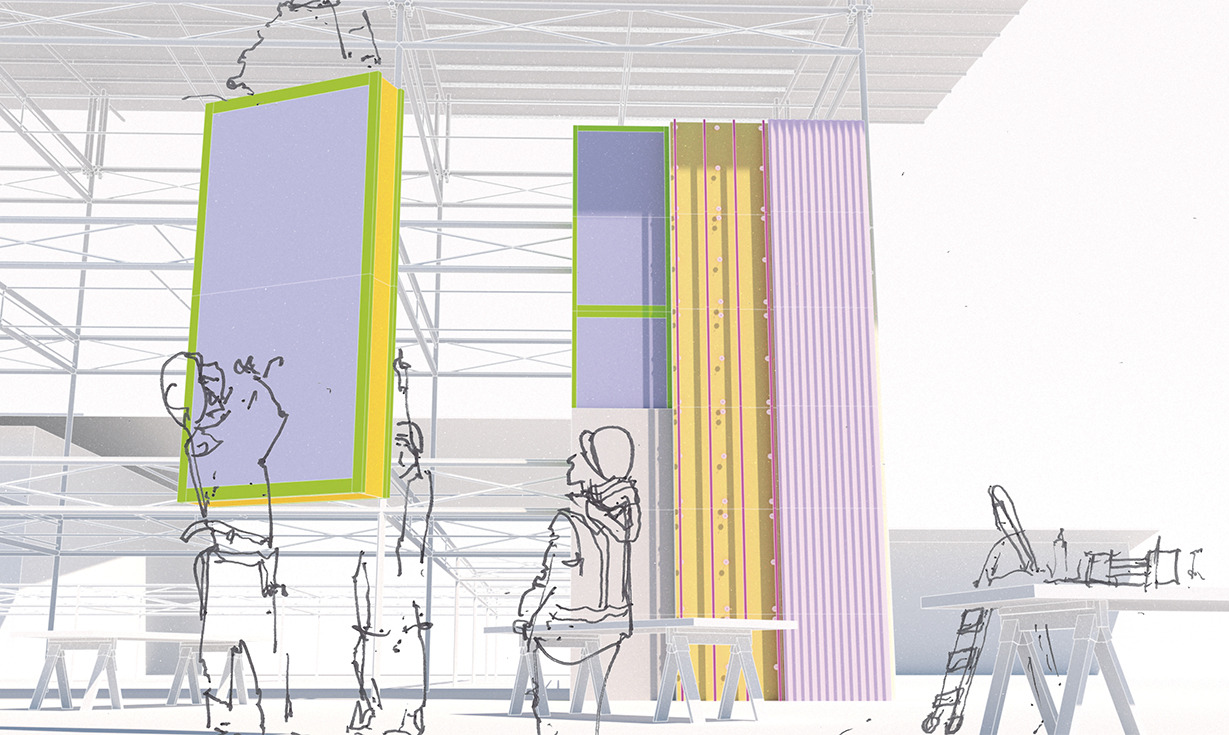This thesis proposes a new trade to be adopted into provincial legislation: the Enclosure Specialist. Amalgamating trades like the EIFS (Exterior Insulating Finishing Systems) Mechanic into a single trade to fill a hole in industry knowledge of insulation products and enclosure systems. In this way they would carry the responsibility and capacity to adopt new climate positive methods.
By resolving the Trade-Skillset dialectic through the creation of a holistic trade, The Enclosure Specialist accomplishes both labour and climate goals simultaneously. Workers have vocational longevity and a trade which inaugurates a new era of standardized wall assemblies offering low-embodied carbon solutions.
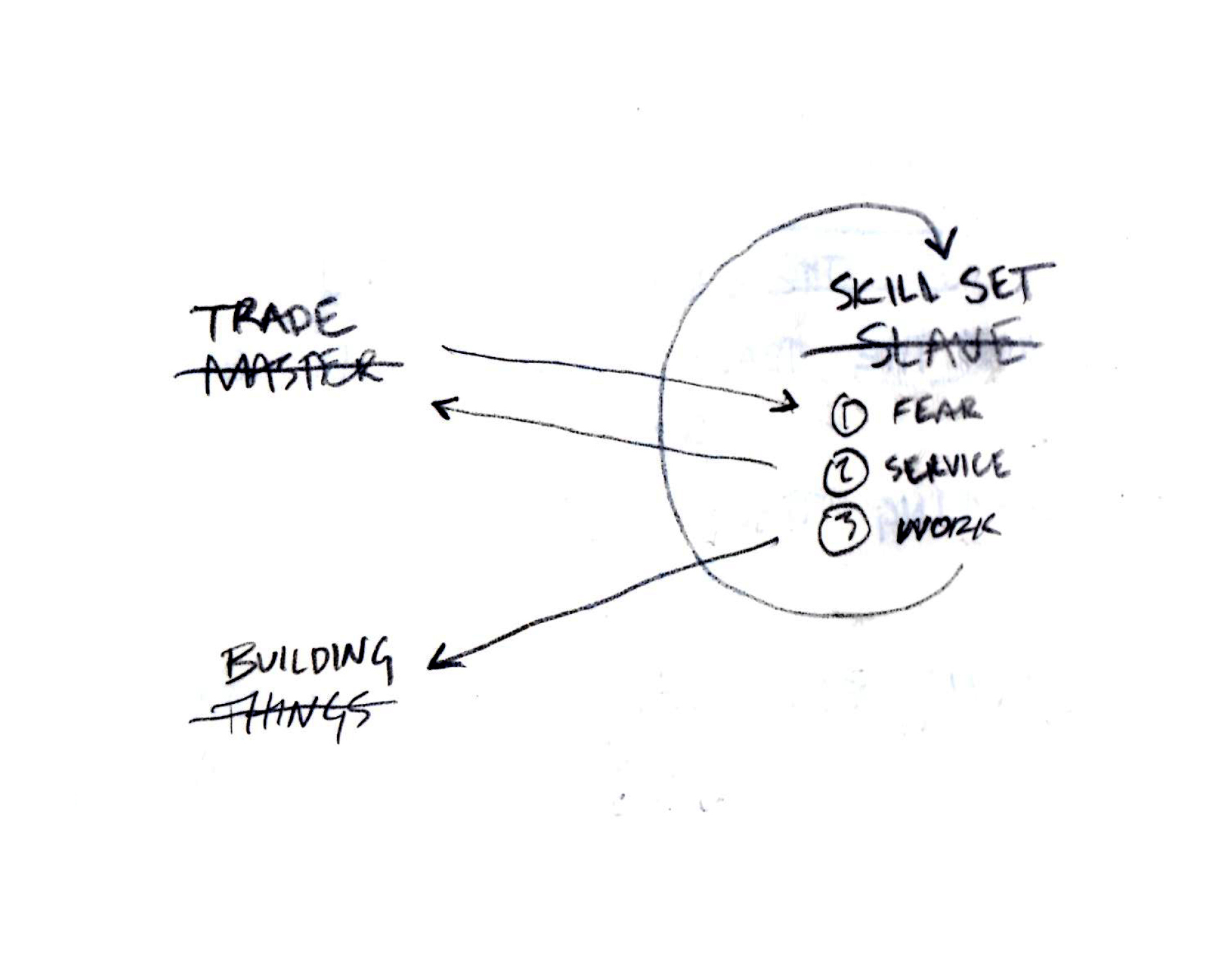



Borrowing Hegel’s Master-Slave Dialectic as a template, I make my own Trade-Skillset Dialectic. The “Trade” determines the scope of practice, but beyond this has powerful social dimensions of individual identity and vocation. The “Skillset” interfaces with the physical world, constructing the edifice, and edifying the hands that made it. Like the development of the conscious spirit, workers require internalized coordination between these two elements to develop. Continuing education is not a modern criteria but an epistemological certainty; this certainty is an asset as we trade up for climate-positive construction.
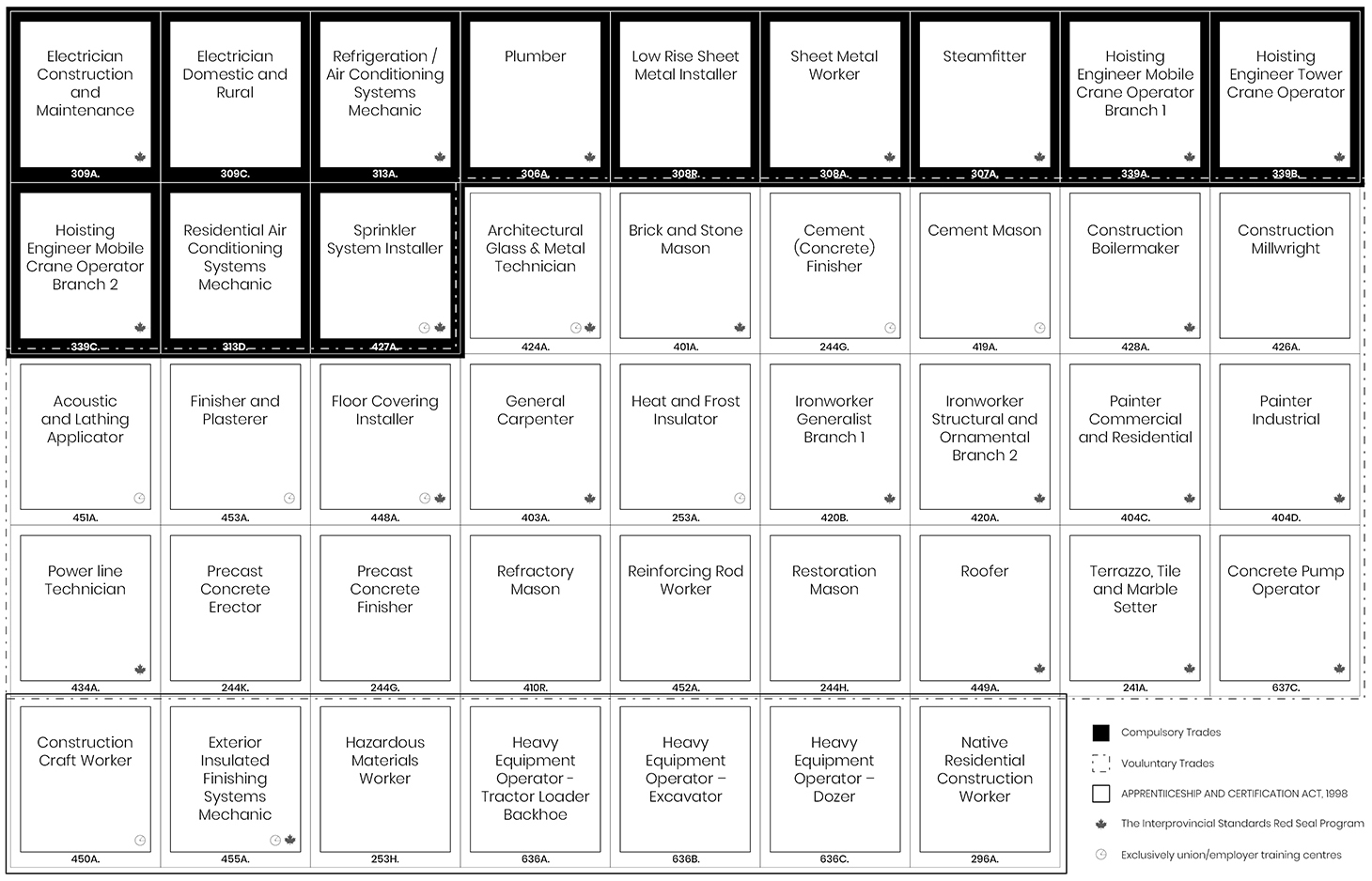

Embodied Carbon analysis of EIFS systems
I find that the EIFS Mechanic is exemplar of a dysfunction between trade and skillset as stipulated in provincial law. The scope of practice exclusively limits the construction of specific wall assemblies. I delaminate various EIFS systems and create a database of the materials, provenance, and embodied carbon per assembly layer. For example the blue layer represents the impact of the XPS foam. These studies provide a baseline to consider how a similar trade could expand to include low-carbon alternatives.




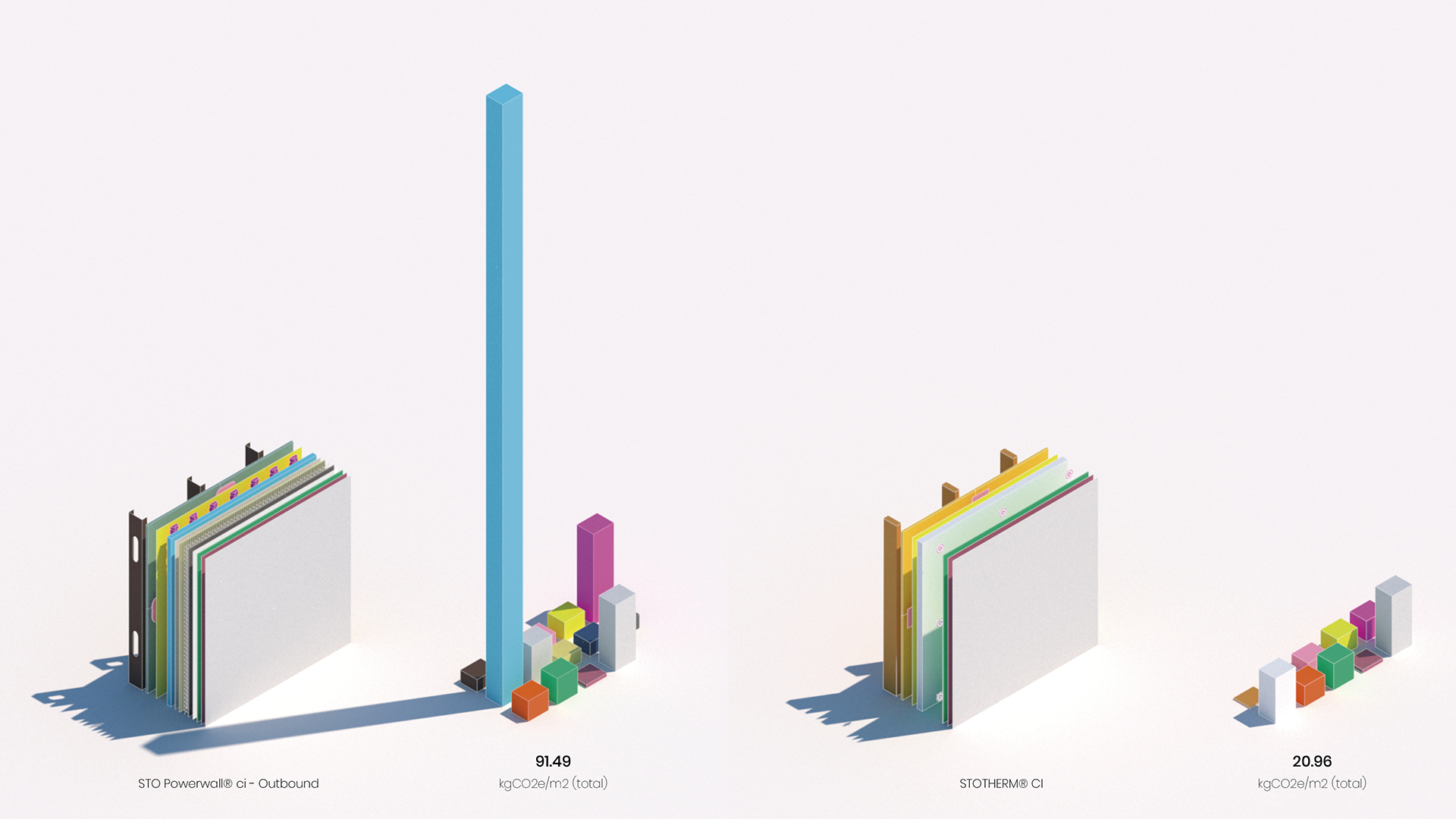
Interview with Patricia
I was connected to Patricia through her training provider. She is a EIFS Mechanic. Our discussion raised many concerns about the issues on the work site: no continuing education, lack of on-site coordination, and no future career in EIFS – despite her pride for the skills and competency she has. This conversation informs a new model of building which prioritizes laborers like Patricia to lead us into these new material cultures. A model of building which orbits around the trades. The training centre hosts all the constituents of building on one site – producers, manufacturers, employers.

A New Model of Building
Acknowledging the complexity of industry coordination which would be active throughout this process, I recommend that a network of training centres are the only way to administrate a new model of building. The training centre hosts all the constituents of building on one site – producers, manufacturers, employers.
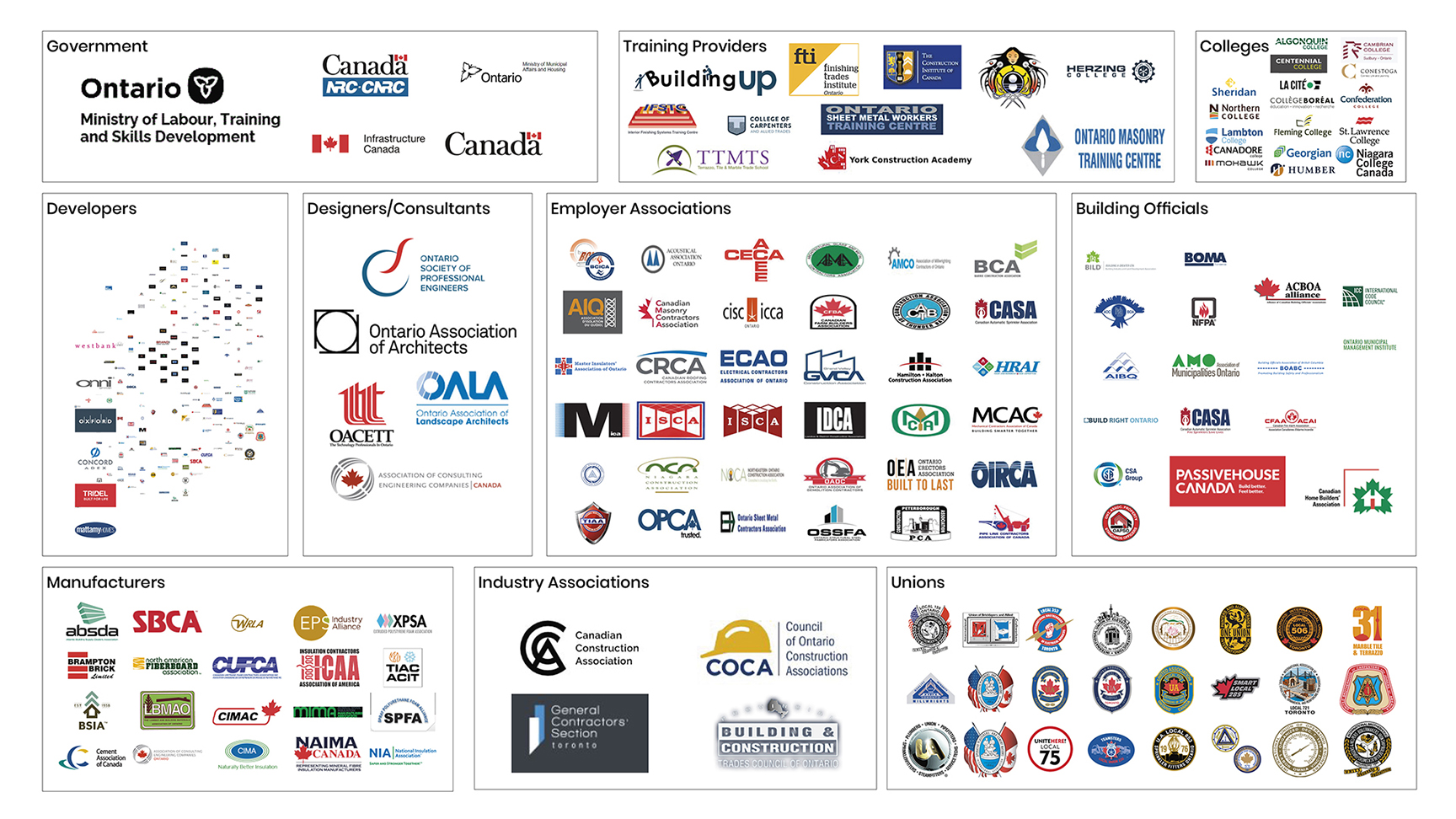
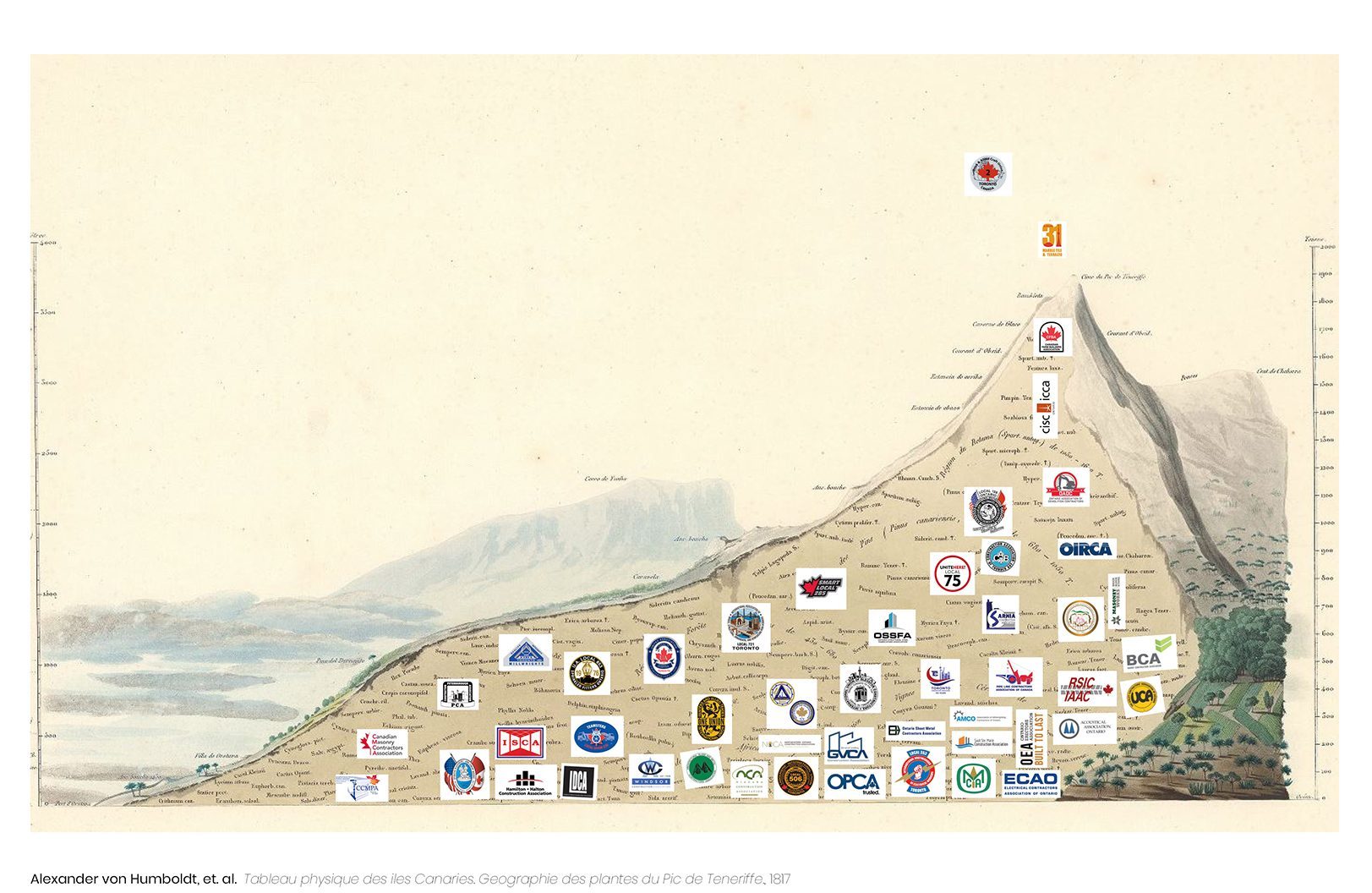


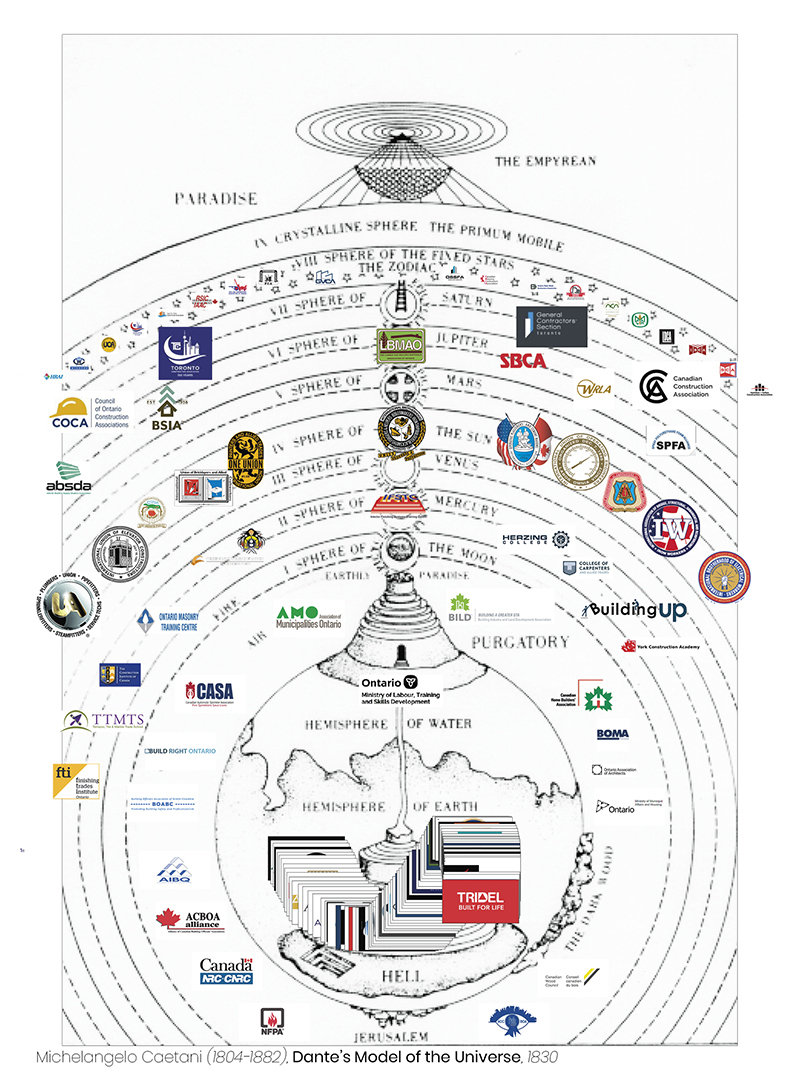
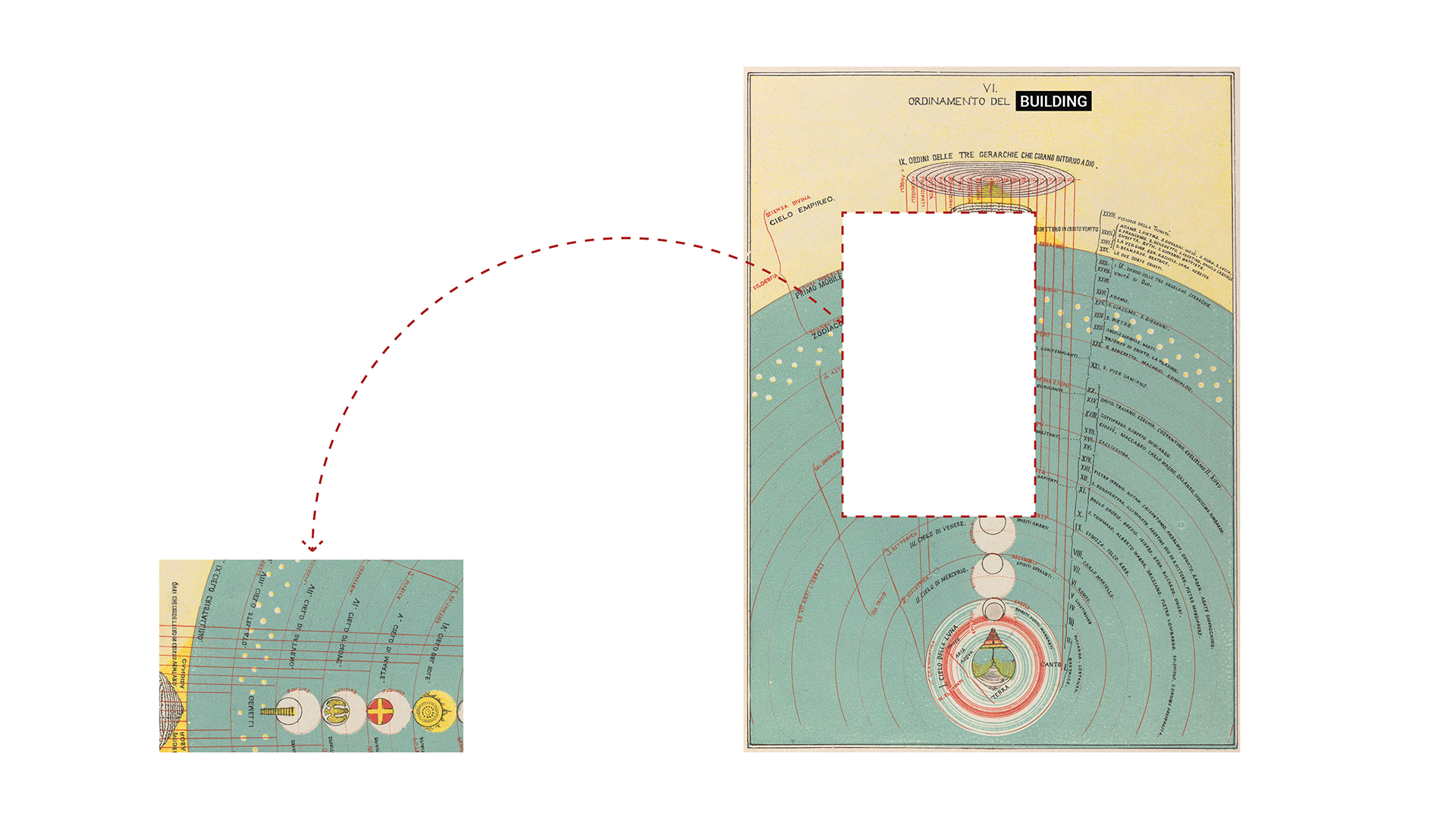
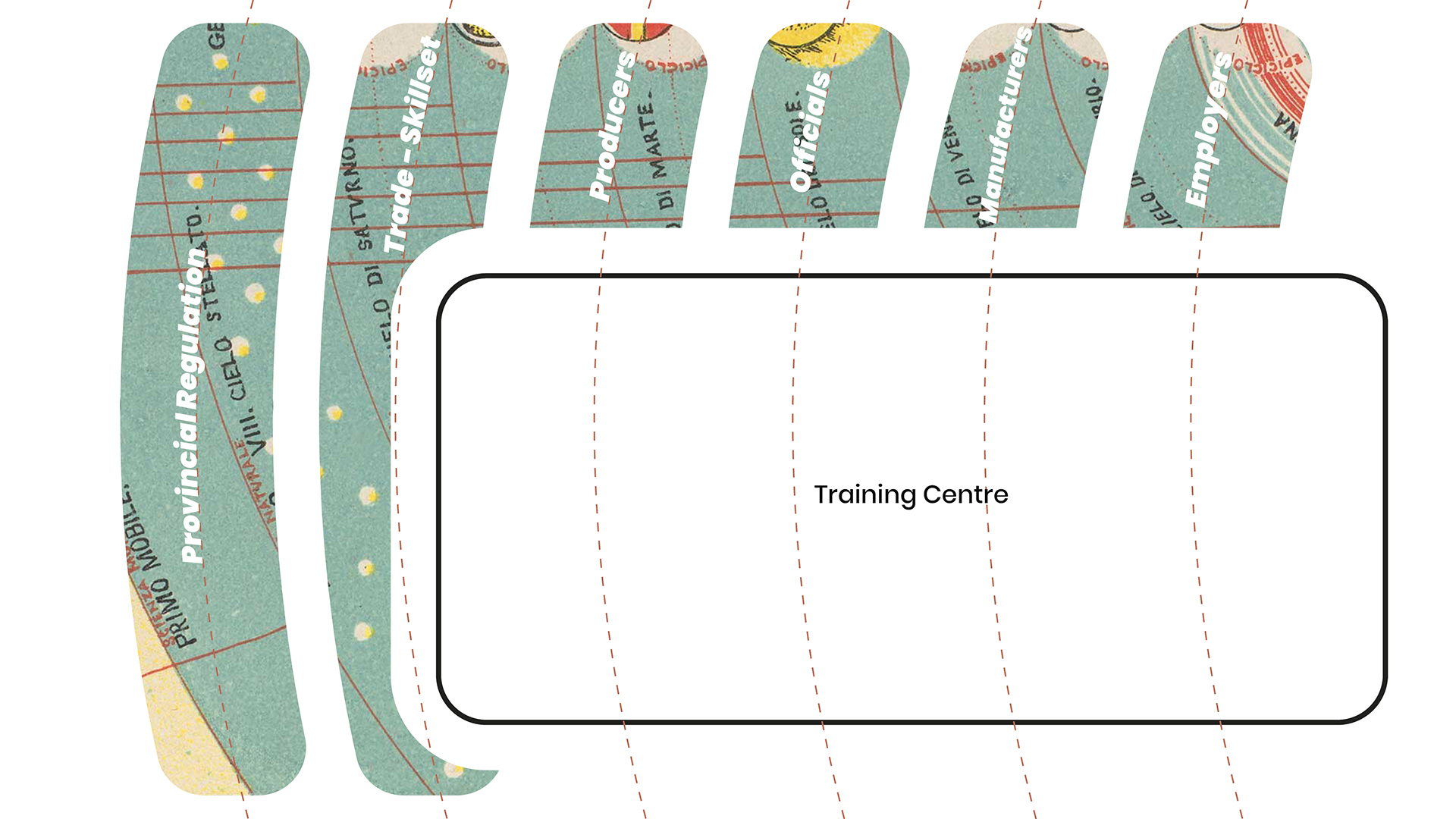
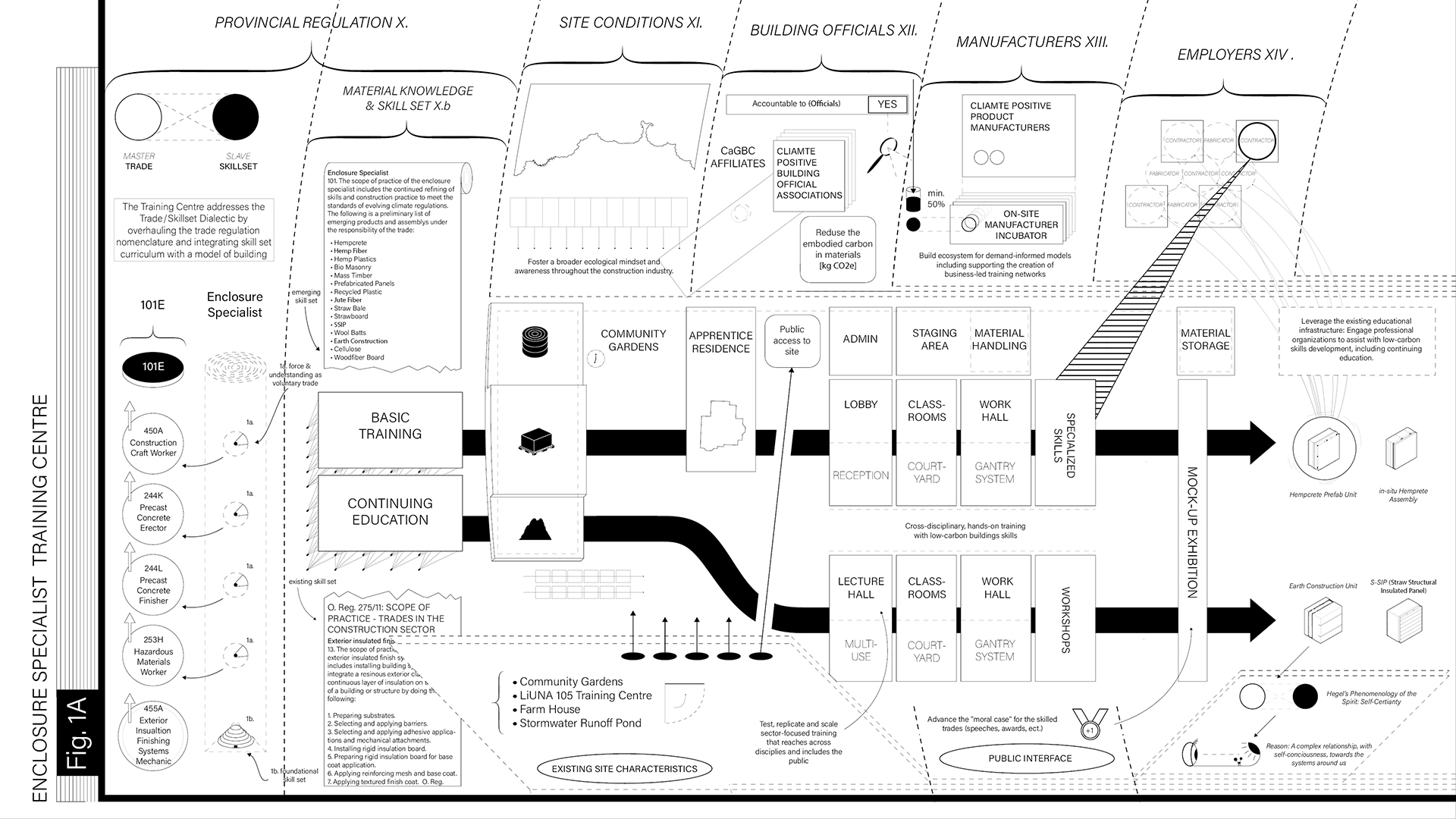
The Training Centre
The centre becomes a laboratory where these assemblies are tested and refined by those who will build them. Panelized systems are hoisted to place, cladding fastened only to be re-examined by the next group of apprentices – cycles of assembly and disassembly exhibited. The enclosure specialist training centre is where the ephemeral nature of architecture starts to be disclosed
I selected the existing LiUNA 506 TRAINING CENTRE as a test site for the new model of building. The site is a mix of conservation land and training facilities. I keep the existing buildings and look to design a 6000sq/m training centre for the Enclosure Specialist Trade.
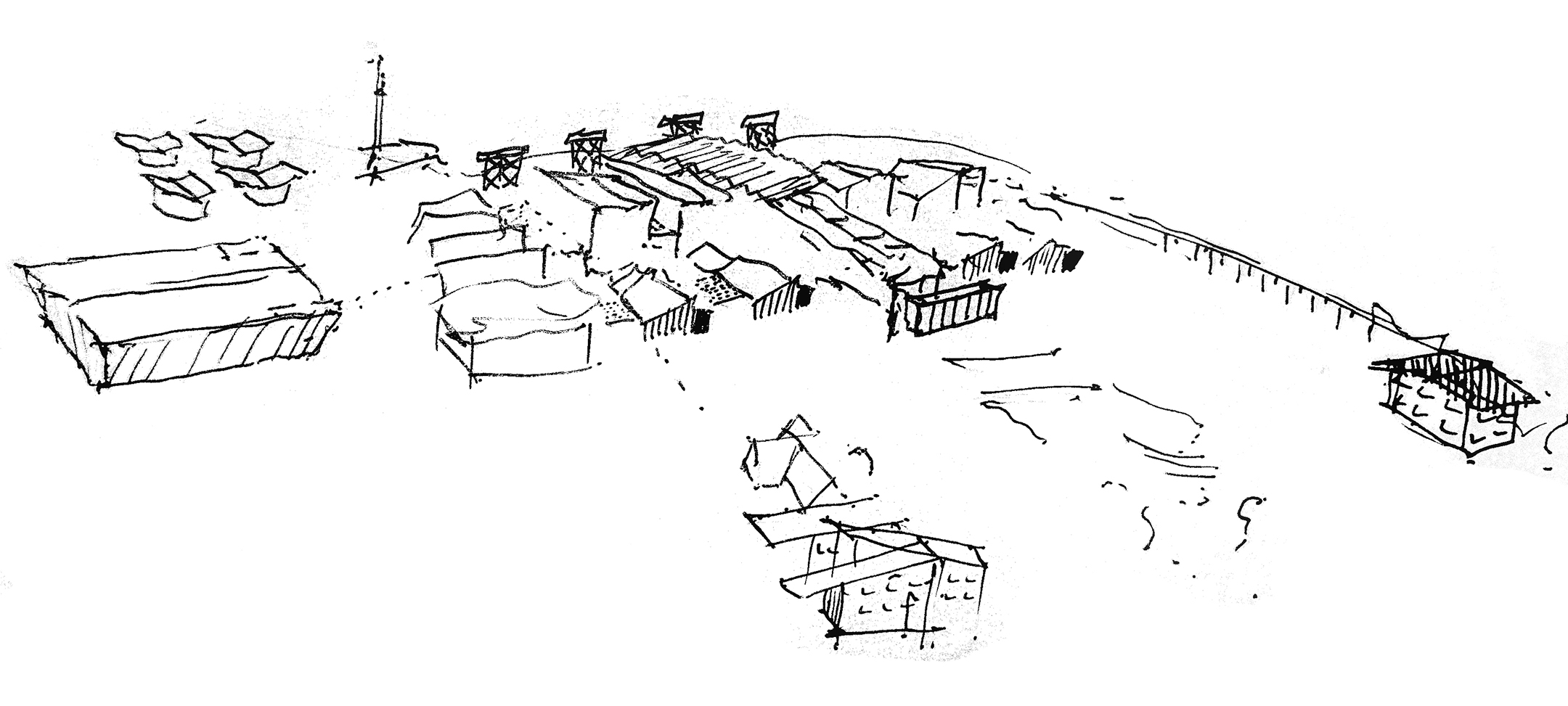
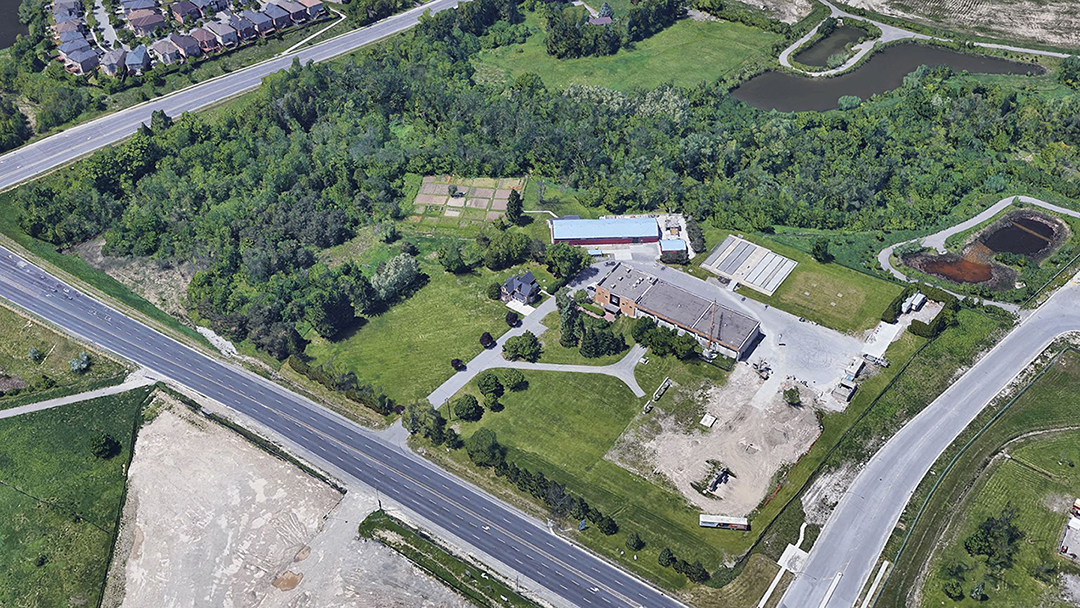
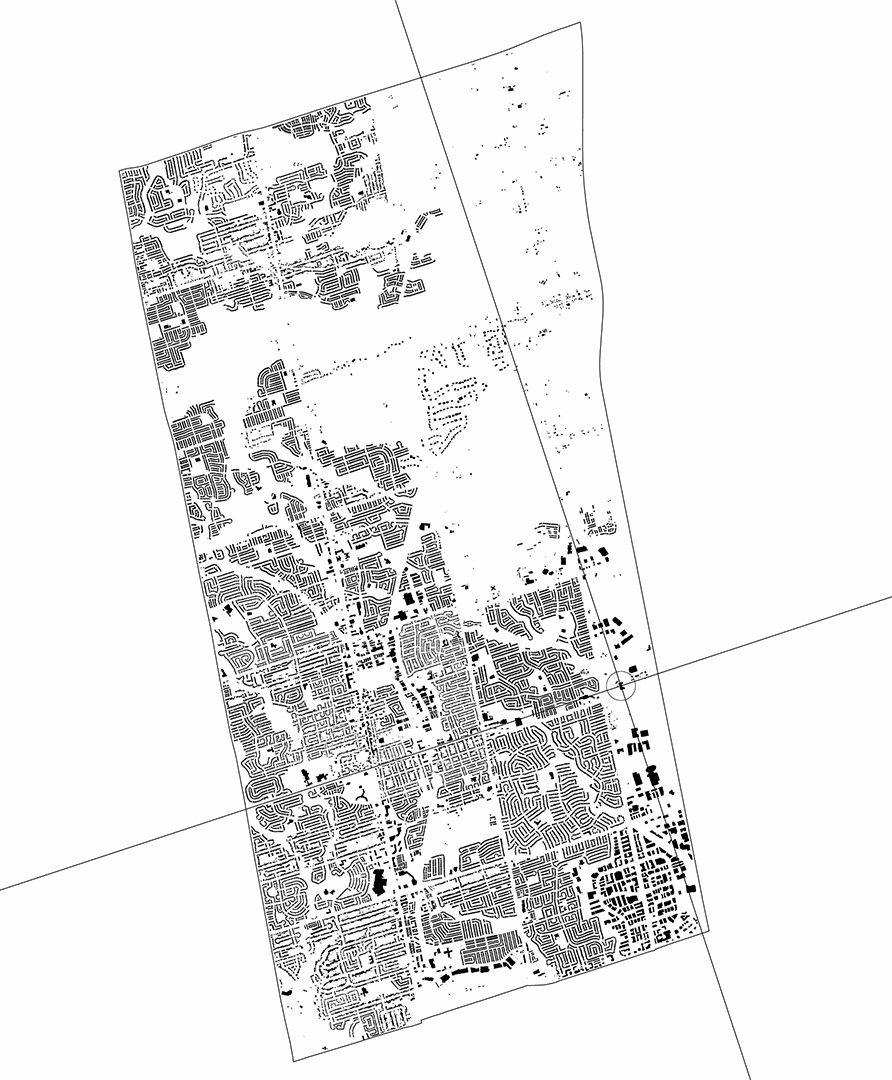

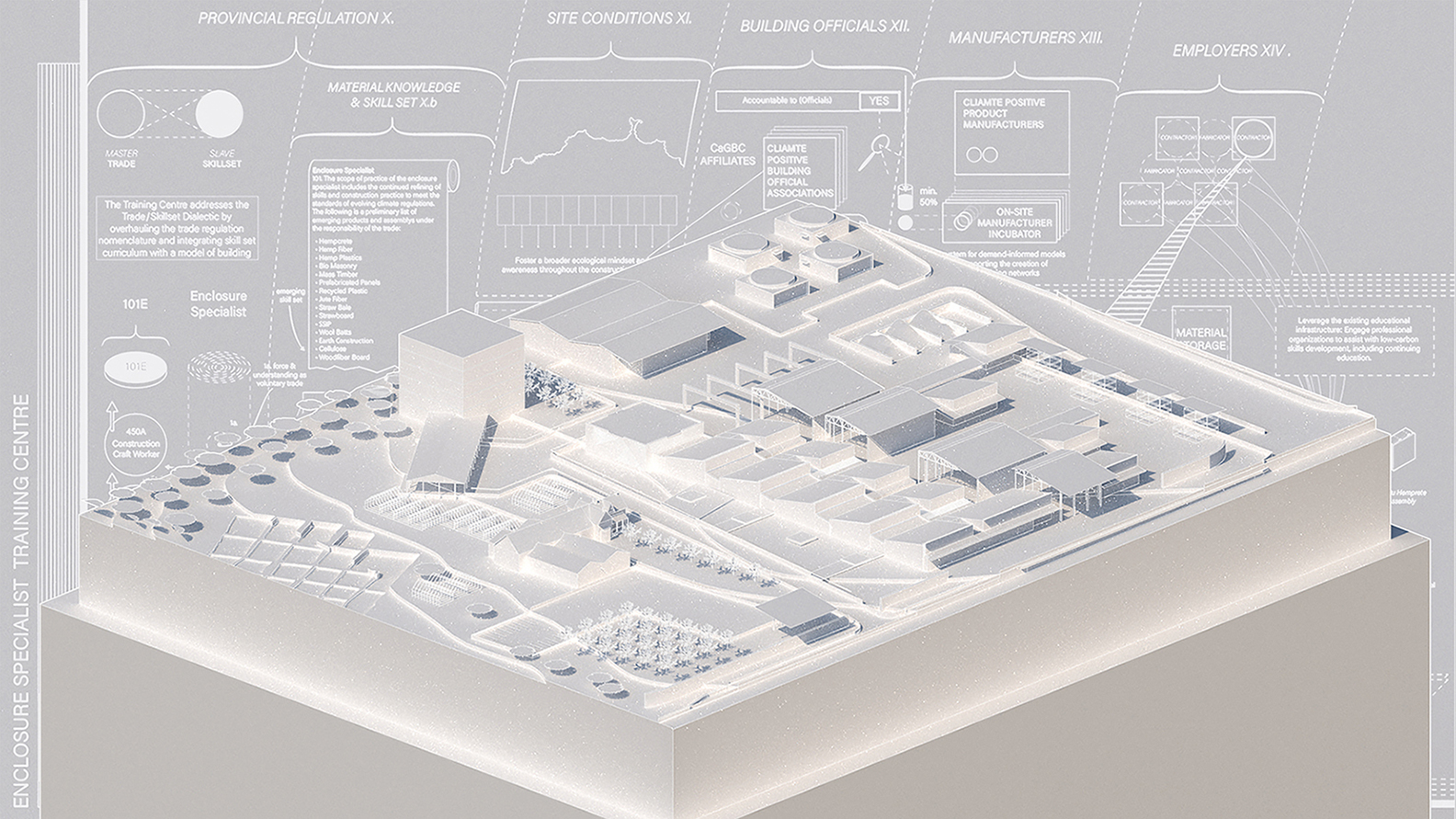
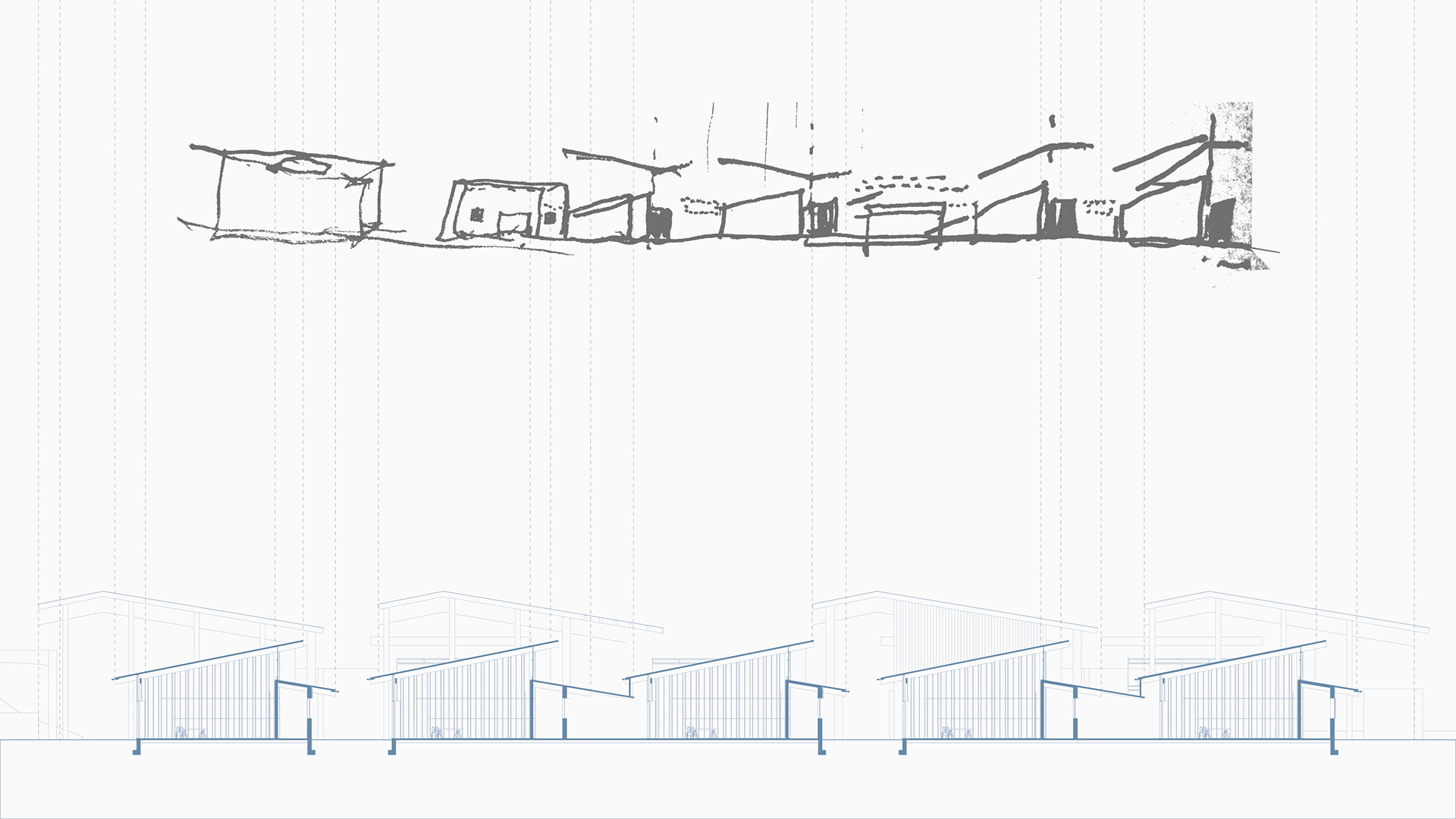
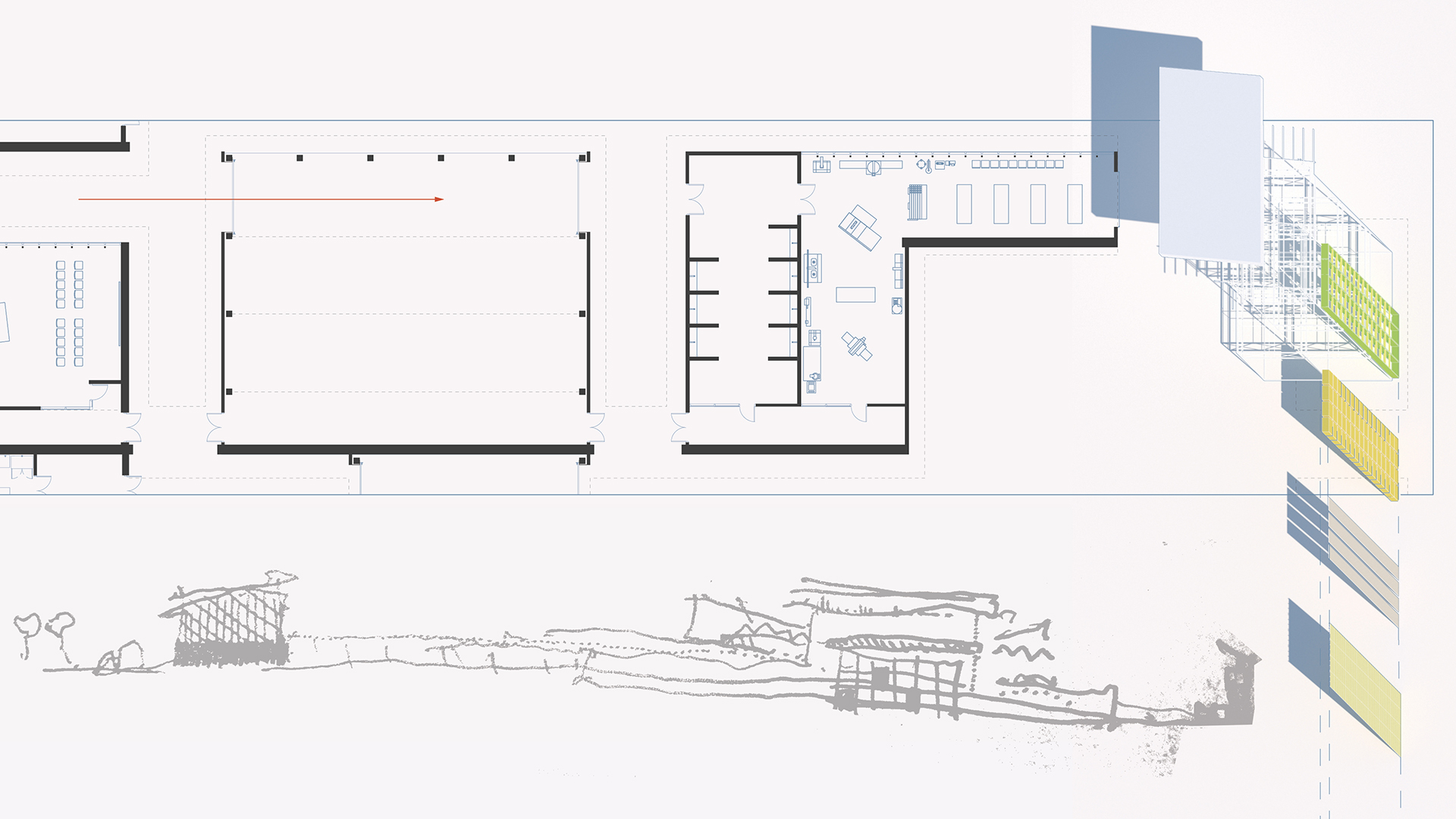
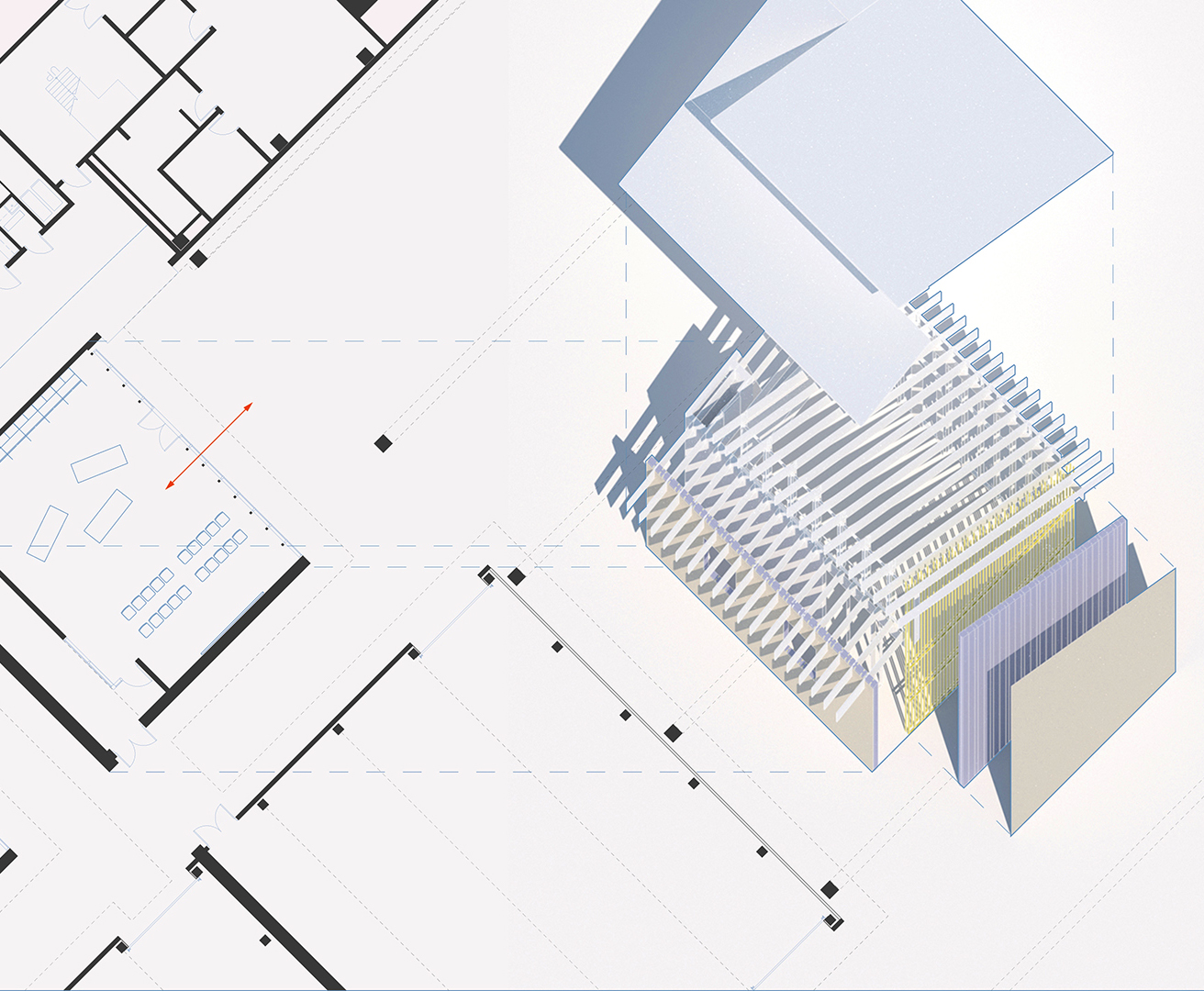

Dynamic Trade/Skillsets
The short term mandate is take the easy-wins – eliminate the largest carbon offenders, and transition the knowledge and skill sets to lower carbon materials. The long term goal is to change the supply chain and integrate natural materials into the trades. Earth construction, hemp, and straw offer opportunities to replace traditional assemblies. None of these are miracle methods but make excellent addition to the ‘tool-kit’ of building solutions.
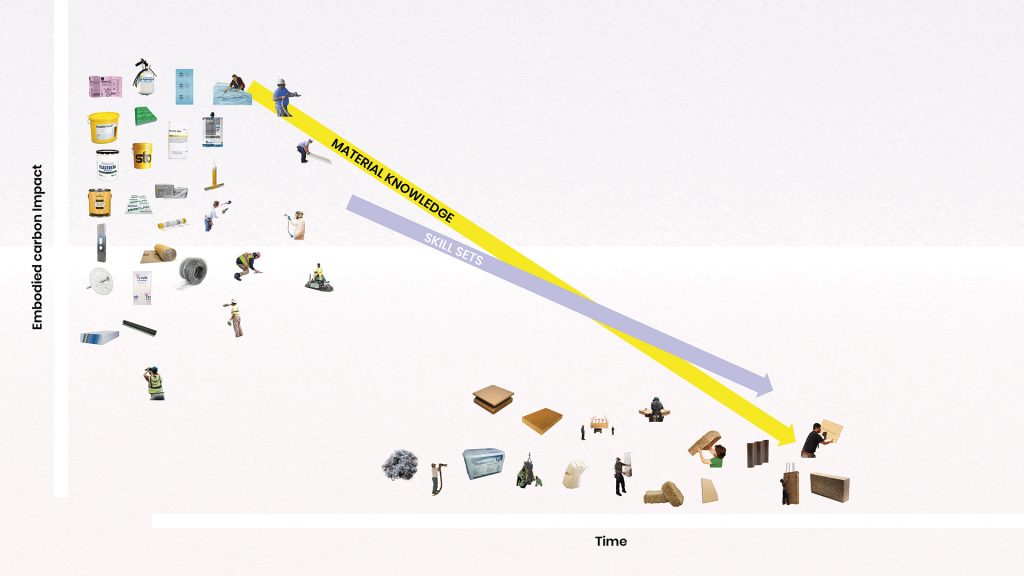
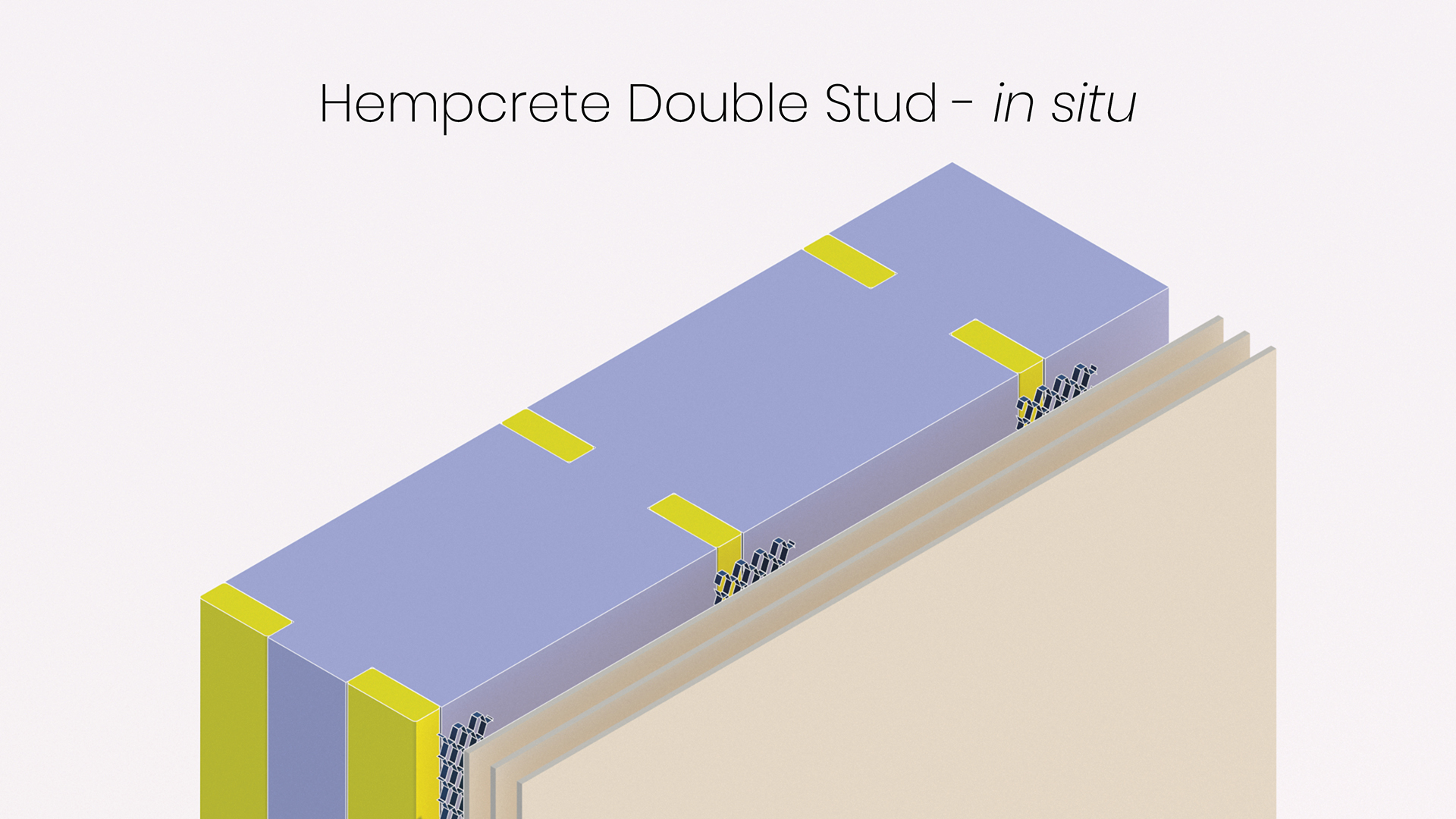
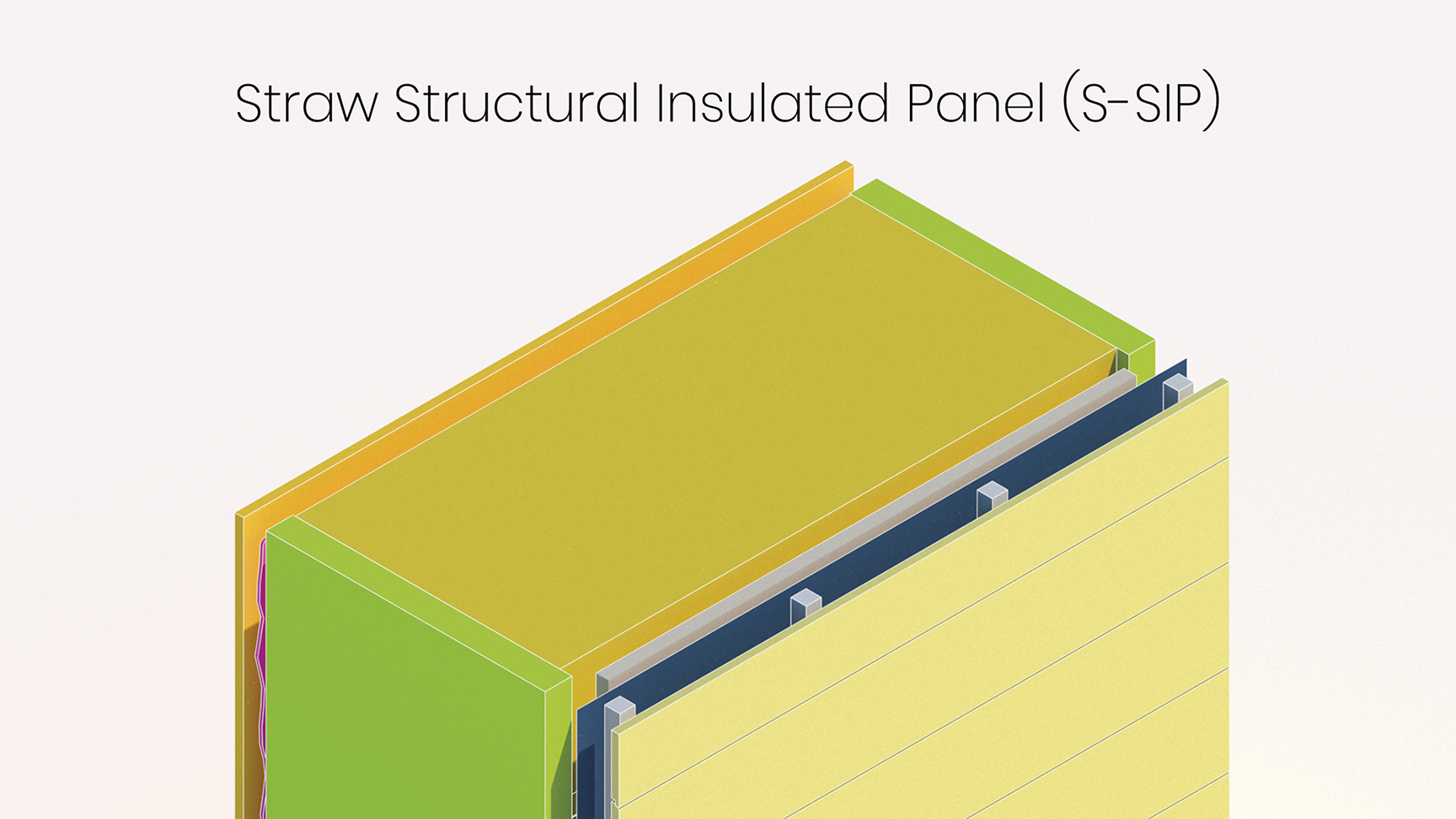

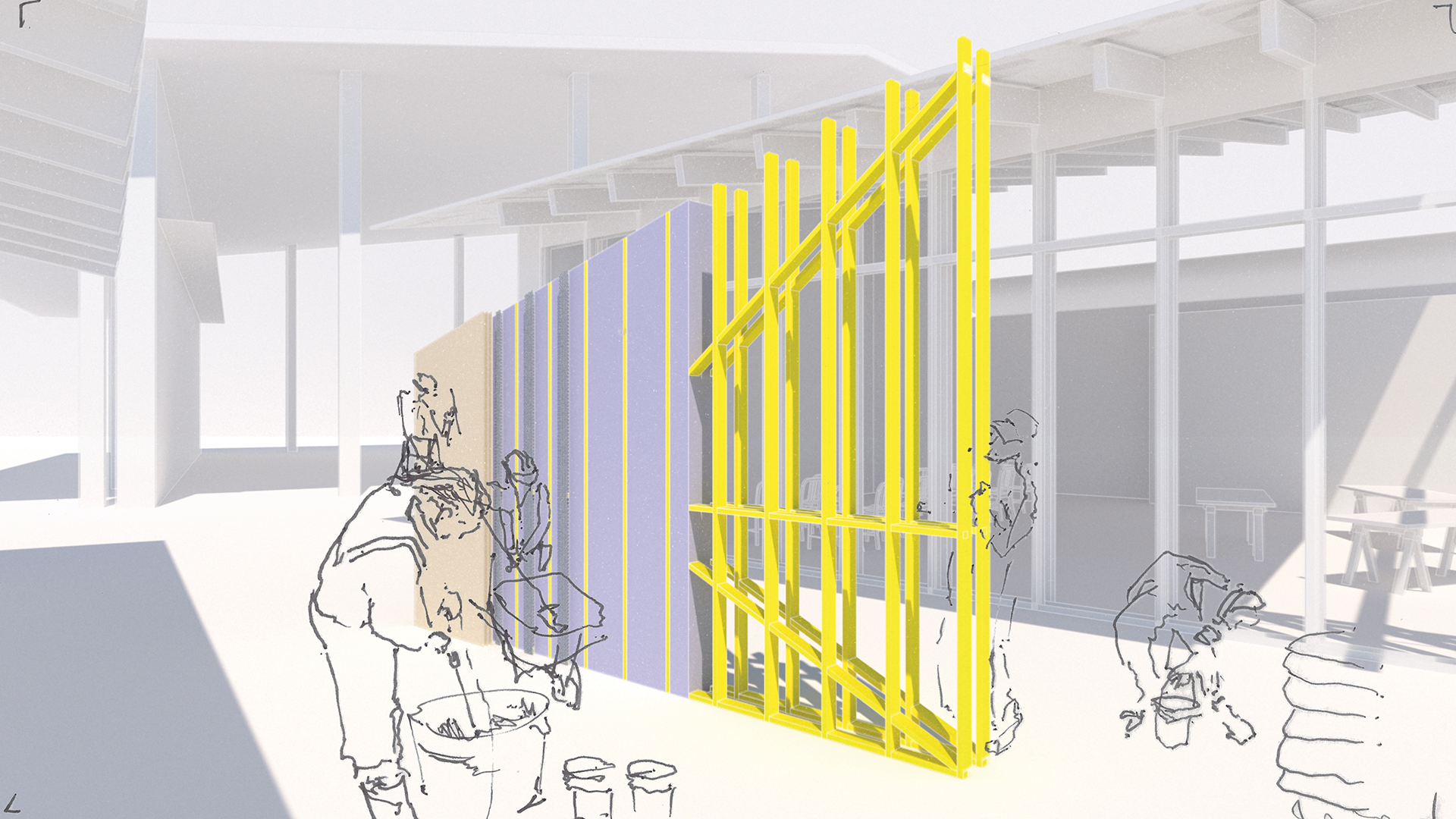
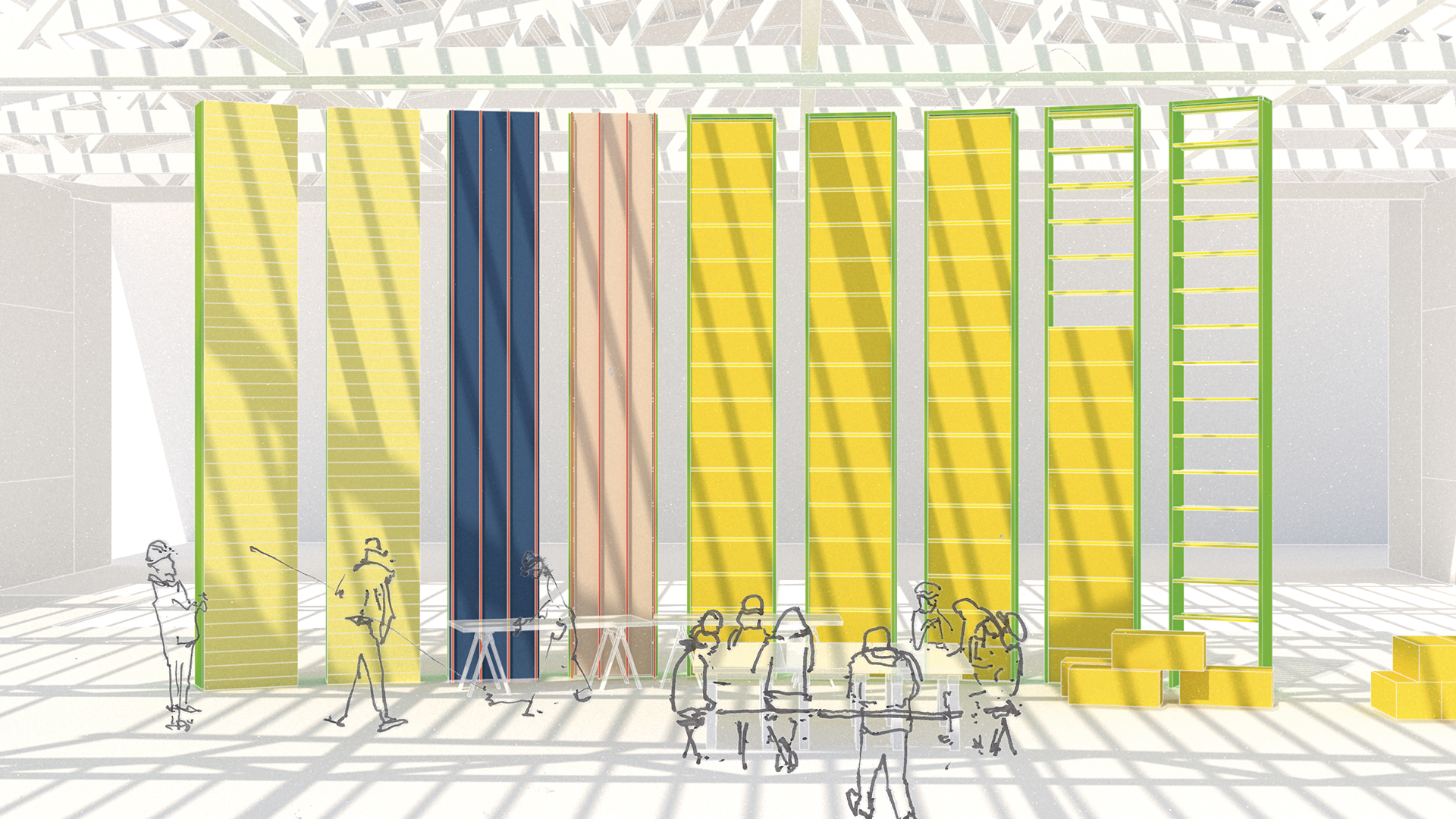

Towards Halving the embodied carbon of construction by 2050
The Enclosure Specialist is on the critical path to halving the embodied carbon of construction by 2050. The long term goal is to change the supply chain and integrate natural materials into the trades. Even before adjusting my comparison of assemblies to match the thermal resistance, the reduction of embodied carbon compared to EIFS is immense. Earth construction, hemp, and straw offer opportunities to replace traditional assemblies. These types become the baseline for the training at the centre.
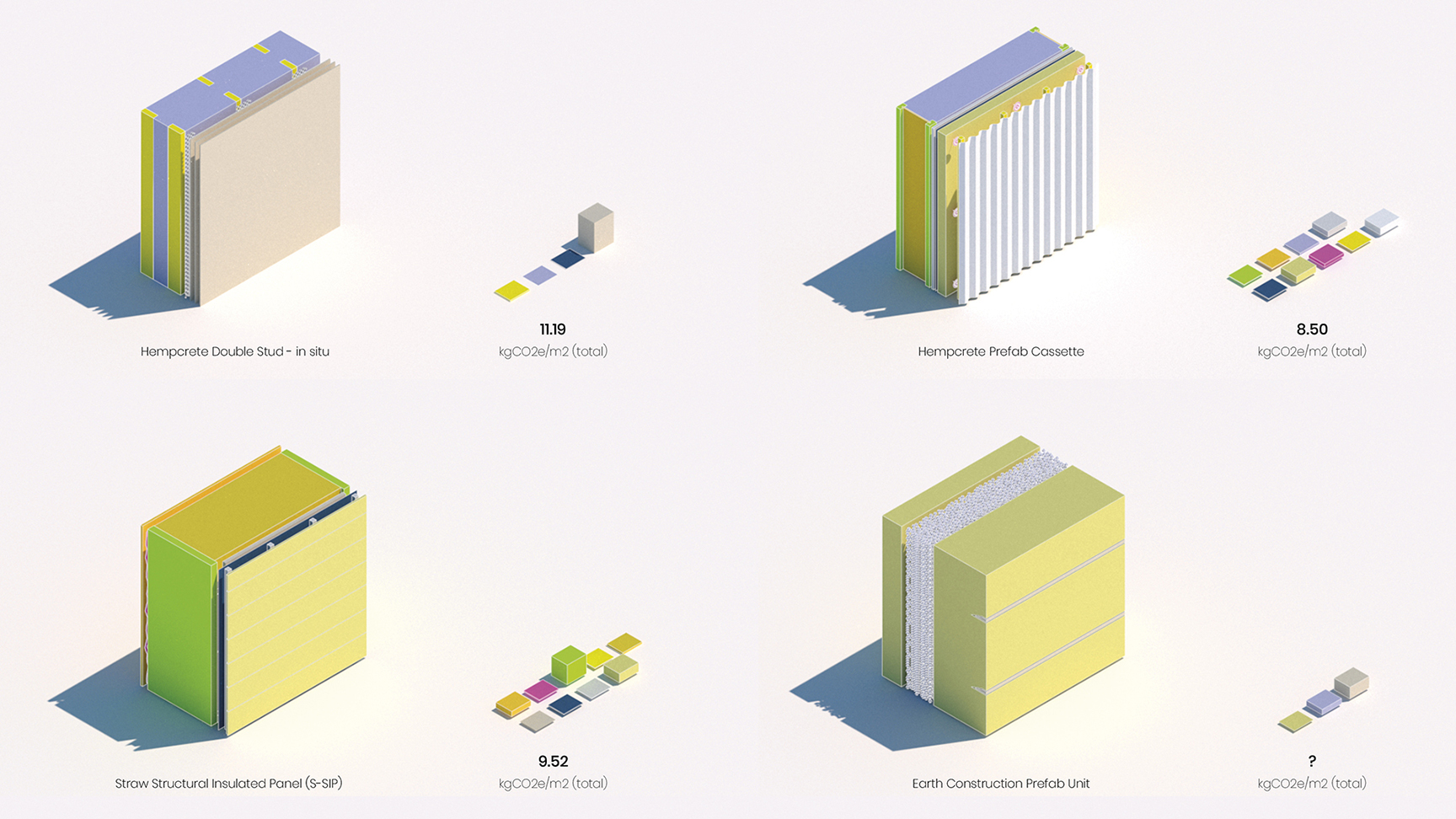

Building/Training Network
The Enclosure Specialist is not just a prelude to the building but instead the primary organizer of sequences within building; sequences which interface with all the numerous stakeholders within a construction process. Resolution of the Trade-Skillset dialectic would inherently assign authority and responsibility to the trade as they negotiate these sequences so that they are no longer a means to an end. The training center and building site collapse into the same epistemological space so that deployable low-carbon solutions can be generated by the trades – transforming building from the bottom up.
